Term 3 Unit 3 | Civics | 6th Social Science - Road Safety | 6th Social Science : Civics : Term 3 Unit 3 : Road Safety
Chapter: 6th Social Science : Civics : Term 3 Unit 3 : Road Safety
Road Safety
Unit 3
ROAD SAFETY
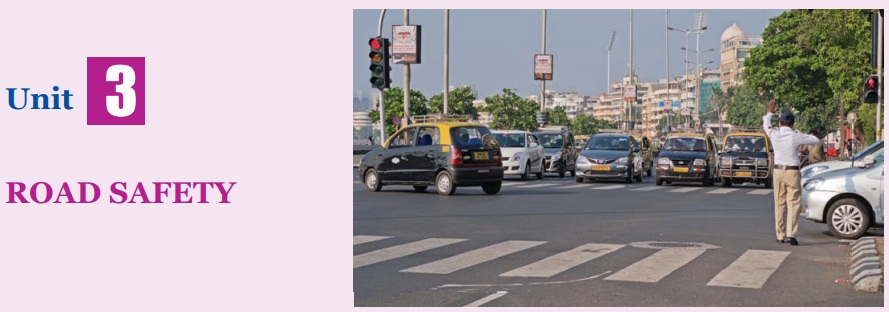
Learning Objectives
*
To understand about the importance of road safety.
*
To know about the road rules and traffic signals.
*
To learn about the road safety measures and strategies and ensure the safety of
lives.
‘Caution and care, make accident
rare’
Traffic rules are
the laws that govern how, when and why you are allowed to drive any vehicle.
The traffic safety course education plays an important role in shaping the
attitude and behaviour of children and young people ensuring to become
responsible drivers, passengers, pedestrians and cyclists.
Keeping the
children safe at all times can be tricky when you cannot be with them always.
Parents and
teachers ensure the safety of the children at home and school. But who keeps
them safe on the road? Therefore educating children about road safety is very
important. Teaching about road safety to children can be started as soon as
they are old enough to step out of the home.
Three types of traffic signs –
Mandatory, Cautionary and Informatory
i.
Mandatory road signs are the ones that
give order regarding do's and don’ts and are to be followed strictly.
These are generally circular in shape.

ii.
Cautionary road signs are the ones
that warn the road user regarding the road situation ahead. Cautionary
signs are generally in triangular shape.

iii.
Informatory road signs are the ones
that give information regarding directions, destination, etc.
Informatory signs are generally rectangular in shape.

 Blue circles give a positive instructions, about what is to be done.
Blue circles give a positive instructions, about what is to be done.
 Red rings or circles give negative instructions. What should not be
done.
Red rings or circles give negative instructions. What should not be
done.
Know your signals
What
do the three colours red, amber and green signify?
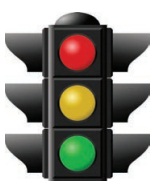
RED means STOP-
Wait behind the stop line.
* If there are no
lines, stop before the traffic light at the intersection so that traffic light
is clearly visible.
* Wait until a
green signal appears before proceeding.
* You may turn
left while the signal is red, if it is not prohibited by a sign. But give
importance to pedestrians and other traffic.
AMBER means
CAUTION-You may move on if the amber appears after you have already crossed the
stop line or when you feel that your stopping may cause accident. Anyhow be
extra careful.
GREEN means GO
– Proceed ahead ensuring that the way is clear.
* You can make
a right or left turn if not prohibited by signs, but take special care and give
way to pedestrians crossing the road.
* GREEN ARROW
means that you can go in the direction shown by the arrow.
Cross roads and pedestrian
crossing
Children have
a tendency just to sprint across the street, as they like. Educate the children
to never run across or along the road. Children can get distracted easily and
leave their parent’s hand to run or sprint away.
Children
should cross only at pedestrian crossing.
Pedestrian Crossing
The
pedestriancrossing was instituted in Britain in 1934. The roads were markedby
dotted lines. On the pavement there were striped Belisha beacon light poles
named after Britain’s Minister of transport L. Horre-Belisha . The Zebra
crossing with black and white stripes was developed after the Second World War.
Road signs,
markings, traffic signals and other traffic devices are there to guide the road
users and hence are the languages of the road. Every road user, whether a
pedestrian, two-wheeler rider, driver of four-wheeled vehicle should have
knowledge regarding these traffic controlling devices and should be aware of
what they signify.
Traffic signs
are there to regulate traffic, warn about hazards and to guide the road user.
Always use pavements
Children
must use the pavements when walking on the road.
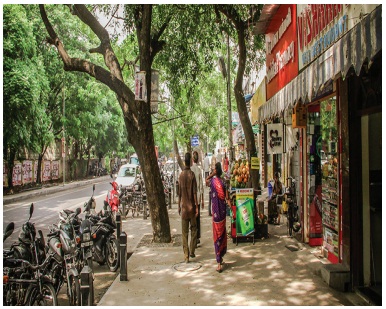
Pedestrian
Do's
* Walk on any
side of the road if there are footpaths.
* On roads
without footpath walk on your extreme rightside facing the oncoming traffic.
* Use zebra
crossing, foot over bridge & subways to cross the roads.
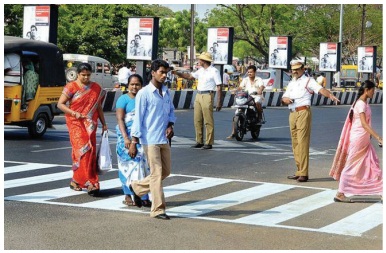
* Where such
facilities are not available be extra cautious while crossing the road.
* Children
below 8 years of age should cross the road with the help of elders.
* Cross the
road when the vehicles are at a safe distance.
* Wear light
coloured dresses during night.
Don’ts
* Don’t cross
the road hastily by running.
* Don’t cross
the road in front of or in between parked vehicles.
* Don’t try to
cross the road from blind corners, turnings where you are not visible to the
vehicle drivers.
* Don’t jump
over the railings to cross road.
Staying safe on a bicycle
Most children
use bicycle to go to schools. So they should be aware of the road rules and
road safety. Moreover they should maintain their bicycles in good condition.
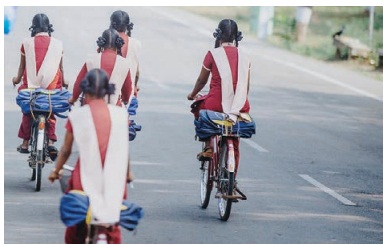
Do's
* Cycle must
be fitted with standard gadgets – bell, brakes, rearview mirror, both front and
back mudguard painted white, reflective tapes affixed at the front and back.
* Cycle on the
extreme left side of the road or use service road, if available
* Avoid busy
roads.
* Keep a safe
distance from fast motorized vehicles.
* Give proper
indications before stopping or turning.
Don’ts
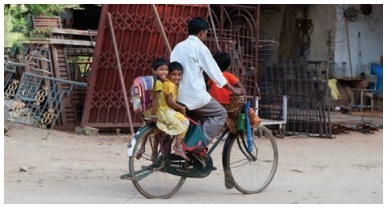
* Don’t
indulge in any kinds of stunts
* Don’t load
the cycle with another person or heavy goods.
* Don’t ride
holding onto other fast moving vehicle.
While commuting in School
transportation
Dos
* Get up early
and start early from home.
* Board the
bus from the designated bus stop in a queue.
* Once inside
the bus, behave properly.
* Hold on to
the railings of the bus.
* Alight only
at the designated bus stop.
* Get down
only when the bus has stopped completely.
* If the
driver is not following the road safety norms, bring it to the notice of school
authorities/parents or traffic helpline.
Don’ts
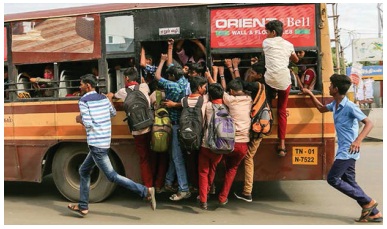
* Do not rush
or run to catch your bus.
* Do not stand
on the steps of the bus.
* Do not make
noise that may distract the driver.
* Do not put
any part of the body outside the bus.
* Do not get
in or get down from a moving bus.
As pillion rider/co-passengers
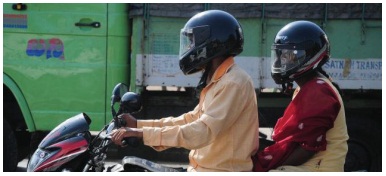
* Always wear
helmet/seatbelt.
* Do not
indulge in talking with the driver.
* Children
above 12 years of age should occupy the back seat.
Play at safe places
* Do not play
on roads.
* Look for a
playground or vacant land to play
* Do not play
around a vehicle parked inside your school premises/colony or near your
residence.
ICT CORNER
Civics - Road Safety.
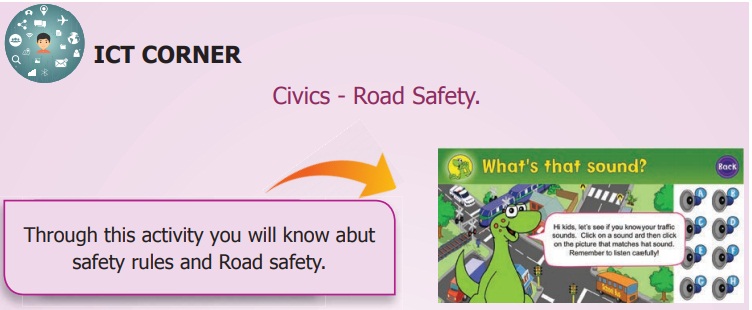
Through this
activity you will know abut safety rules and Road safety.
Steps:
Step 1: Use the URL
or scan the QR code to open the activity page.
Step 2: Click the
“Start” icon to enter the game page.
Step 3: Choose and
Click any game you can start the game.
Step 4: Play and
Finish the Game Step by Step.
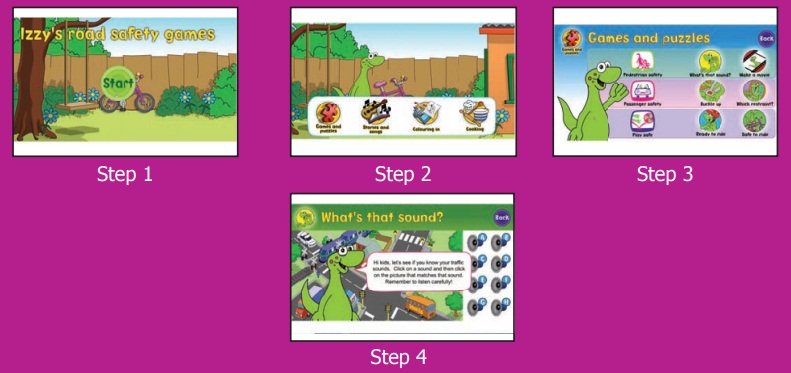
*Pictures
are indicatives only.
Browse in the link
Web:
https://www.sdera.wa.edu.au/programs/smart-steps/izzy-games/
Related Topics